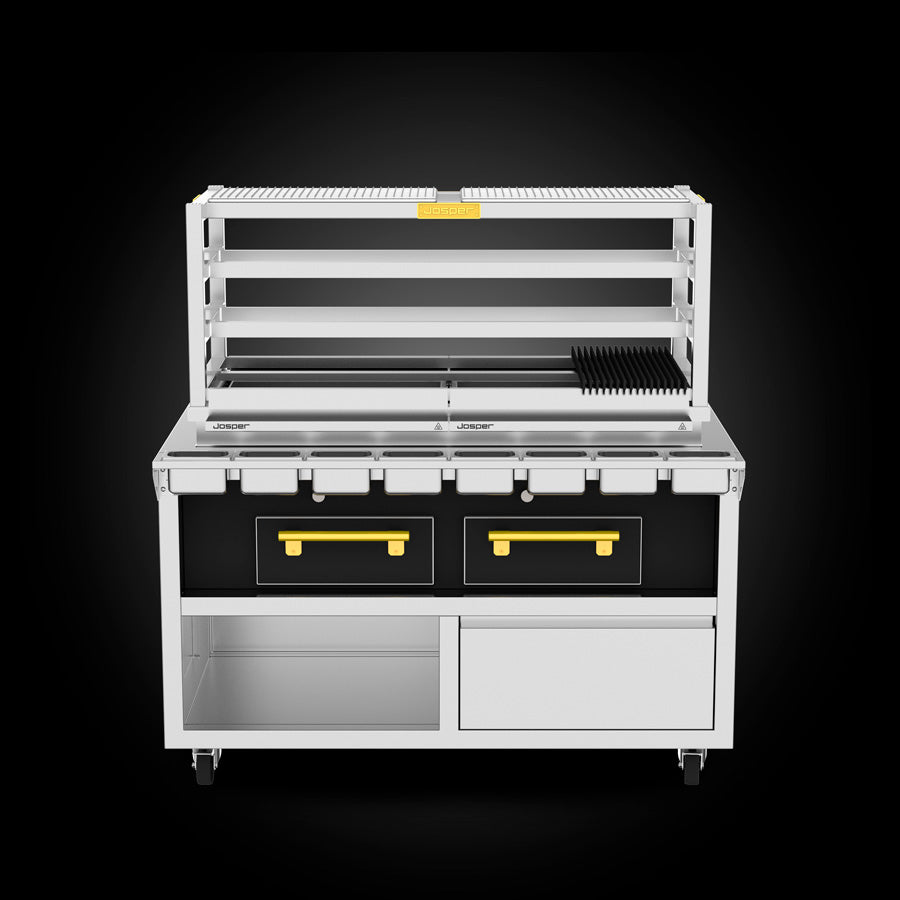Mangal cooking originates from the Middle East and the Caucasus region, particularly popular in countries like Turkey, Armenia, Azerbaijan, and Georgia. The word “mangal” refers to a charcoal grill or open barbecue pit, often a long, rectangular structure where skewers of meat, fish, or vegetables are cooked directly over glowing coals.
It’s not just a cooking method—it’s a social tradition. Families and friends gather around the mangal, enjoying freshly grilled kebabs, lamb chops, or fish, paired with fresh salads, flatbreads, and dips.
Key features of mangal cooking:
-
Fuel source: Hardwood charcoal for a deep, smoky flavour.
-
Cooking style: Direct heat, open flame grilling.
-
Common dishes: Shish kebabs, kofta, grilled vegetables, and whole fish.
-
Cultural significance: Often associated with outdoor gatherings, celebrations, and weekend feasts.
While the traditional mangal is simple, modern kitchens have adapted the technique using specialised charcoal ovens like the Josper—blending the authenticity of charcoal with professional precision.
The Josper: The Modern Evolution of Mangal Cooking
The Josper is a Spanish-designed, high-performance charcoal oven that merges the best of an enclosed grill and an oven. While traditional mangals are open, the Josper brings a closed-chamber design, allowing chefs to cook with charcoal’s smoky flavour while maintaining higher temperature control and efficiency.
1. How the Josper Works
-
Fuel: 100% hardwood charcoal, similar to a mangal’s traditional fuel.
-
Design: An enclosed, front-loading oven with adjustable air vents to control oxygen flow and temperature.
-
Temperature Range: Can operate between 300°C–500°C (572°F–932°F), much hotter than standard grills.
-
Cooking Environment: The closed chamber retains heat and smoke, infusing food with an intense yet controlled smokiness.
2. Why Chefs Love the Josper
-
Faster cooking times due to intense, even heat.
-
Smoky flavour without flare-ups—the enclosed chamber prevents excessive charring.
-
Moisture retention—the oven’s design keeps meats tender and juicy.
-
Versatility—ideal for steaks, seafood, vegetables, and even flatbreads.
3. Josper vs. Traditional Mangal
| Feature | Traditional Mangal | Josper Oven |
|---|---|---|
| Design | Open grill | Enclosed charcoal oven |
| Heat Control | Manual, through coal arrangement | Precise, via adjustable vents |
| Cooking Speed | Moderate | Very fast due to high heat |
| Smoky Flavour | Strong, rustic | Intense but refined |
| Versatility | Skewers & grills mainly | Grills, roasts, baking |
4. The Josper in Professional Kitchens
Many high-end restaurants now use the Josper to elevate their grilled offerings. It gives the theatre of charcoal cooking with the consistency required for service, making it perfect for everything from wagyu ribeye to whole sea bass.
Some chefs even integrate traditional mangal recipes into the Josper, merging ancient grilling culture with modern efficiency.
Final Thoughts
Mangal cooking is one of the oldest and most flavour-packed cooking traditions, and the Josper is its modern cousin—designed for precision, speed, and consistency. For home cooks, the mangal is a great way to gather friends for an authentic barbecue experience. For restaurants, the Josper brings the same soul but with professional-grade performance.
If you’re in hospitality, adding a Josper to your kitchen can turn simple grilled dishes into signature menu highlights—blending tradition and innovation in every bite.










